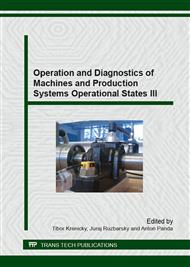p.3
p.11
p.19
p.29
p.36
p.44
p.52
p.63
Observation of Impact of Progressive Cooling System on Temperature Field Distributions on Surfaces of Injection Moulded Plastic Parts
Abstract:
Cooling the injection moulds with using of liquid CO2 is rated among progressive and innovative tempering systems nowadays. In the ideal case this cooling method is chosen in combination with conventional drilled or milled tempering channels where the heat transfer medium flows. These wide-spread ways of cooling are not very often effective enough and they do not provide required accuracy of heat transfer control during production by injection moulding technology. Implementation of capillary tubes that bring the liquid CO2 to critical zones enables local increasing of heat transfer. Regulation of liquid CO2 amount that is injected into mould enables removal of required heat quantity in a very short time period. In this way the homogenous rate of part cooling can be achieved which is very difficult when producing the parts with complex geometry or with combination of various wall thickness. The final mechanical and physical properties of moulded parts accrue from properties of polymer material, part design and used technological parameters. This article deals with evaluation of technological parameters, concretely the cooling parameters of both the conventional cooling method and the system utilizing the cooling potential of liquid CO2. The analysis is focused on observation of temperature field distribution on injected part surfaces.
Info:
Periodical:
Pages:
19-28
Citation:
Online since:
October 2015
Authors:
Keywords:
Price:
Сopyright:
© 2016 Trans Tech Publications Ltd. All Rights Reserved
Share:
Citation:


